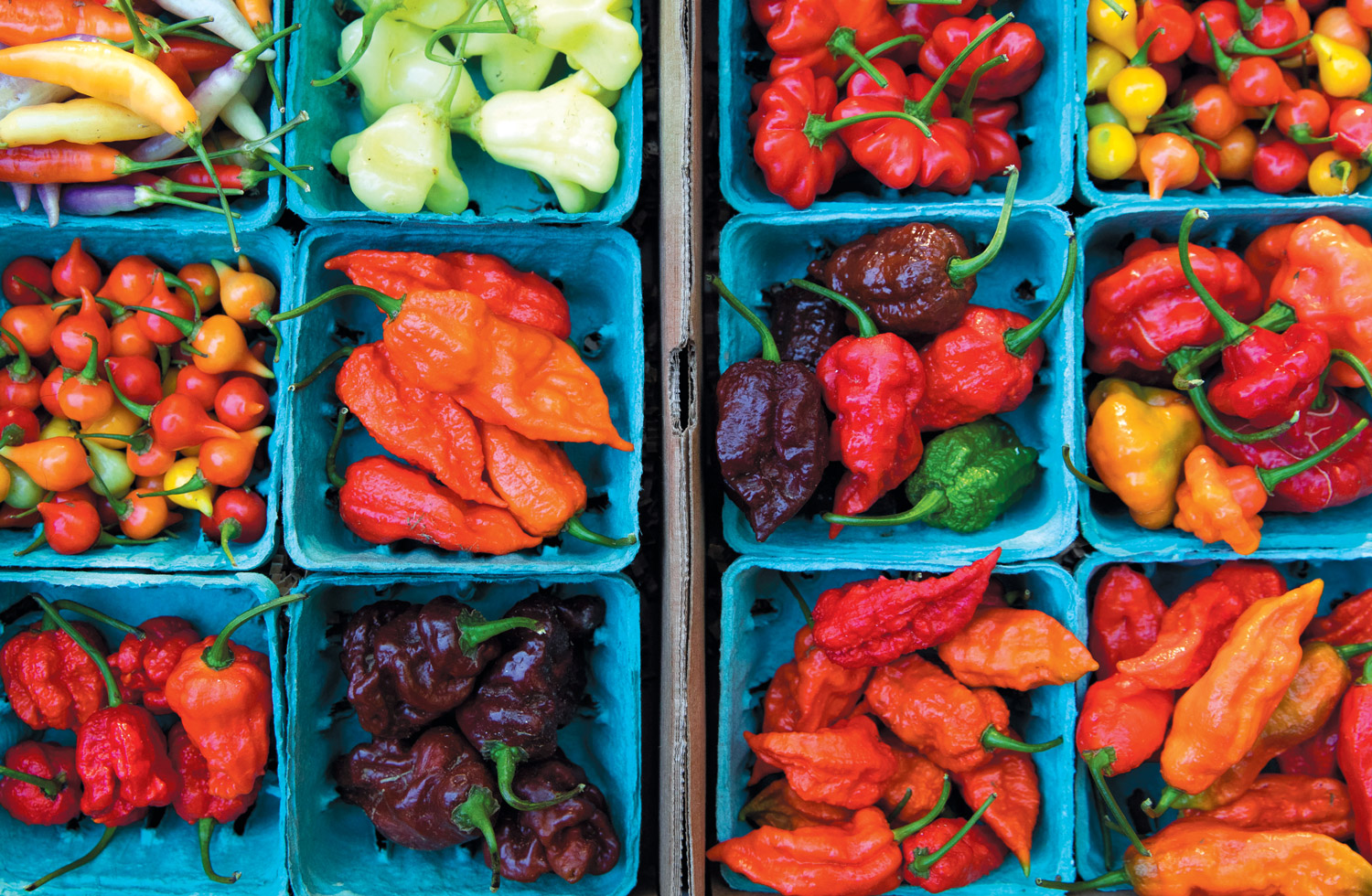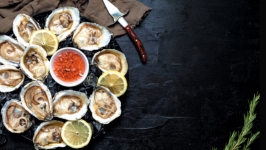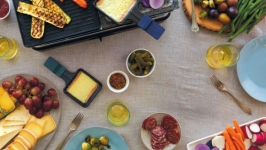Hot Pepper Paradise: Robyn Jasko of Home Sweet Homegrown is on Hot Streak
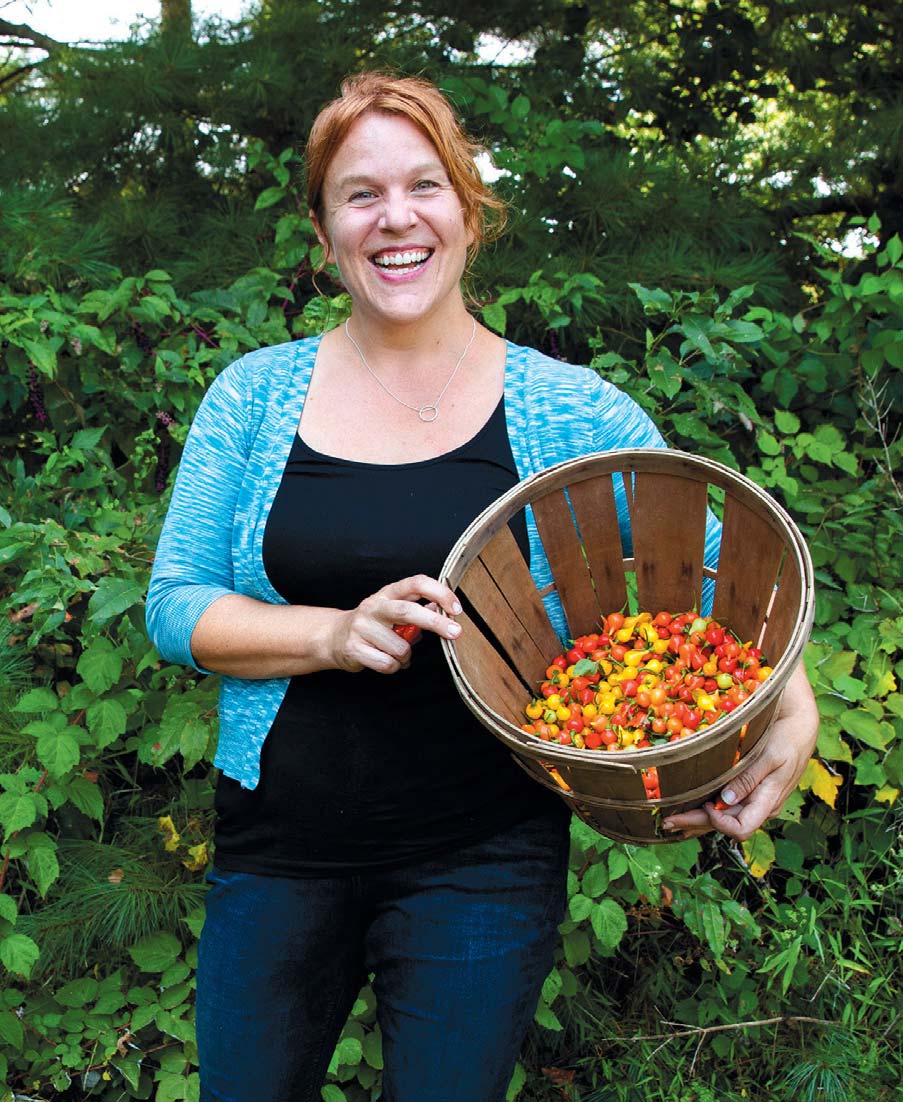
Robyn Jasko holding basket of Pimenta Biquino peppers.
IT’S THE MIDDLE OF SEPTEMBER when I pull up to the farm, which is tucked away behind a local little league field in Kutztown Park. It’s smaller than I expected but just as picturesque. Empty wood bushel baskets are stacked in rows on a green handcart, ready for the picking to begin. The sky is clear and blue, but instead of autumnal crispness, we’re met with a blazing heat from the sun, which is almost at its zenith. That feels pretty appropriate, though. After all, we’re not here to pick apples.
Today is opening day for the eight-week-long hot pepper harvest that Robyn Jasko, founder of the Home Sweet Homegrown hot sauce and hot pepper CSA, has been orchestrating for the last five years. About half of the peppers will go into her acclaimed line of homemade hot sauces; others will be shipped in Whitman sampler–style boxes to members of the CSA, the only one of its kind. And, at Jasko’s urging, more than a few will be popped into the mouths of the community members, like me, who are doing the picking.
“People are always amazed at how different peppers taste fresh off the plant,” she says. “The flavor is unmatched.” There’s much more nuance to a fresh pepper than mere heat. The taste is crisp and vegetal, more pepper essence than taste bud–obliterating fire. Some, like the slender yellow aji limon, have citrus notes backed by a throat-burning sting. The petite red, bulb-shaped bird’s beaks are mild and slightly sweet, the kind of peppers chefs refer to as aji dulce, or seasoning peppers. Jasko has sold them to New York’s famed Momofuku, where they pickle them for martini garnishes.
The six tidy rows on this three-acre rented plot encompass 19 different varieties, some 2,000 plants total, and for Jasko, that isn’t a lot. In the past she’s had as many as 12,000 plants and 40 different species. She handpicks what to plant each year, combing through piles of seed catalogs to find the rarest, most popular or newest varieties.
“What I never realized before I started making hot sauce,” she says, “is that there are literally peppers all across the globe— in Japan, in Greece, in Finland.” Many spicy peppers hail from tropical climates, like the Brazilian starfish or Caribbean red. But it turns out that Kutztown, Pennsylvania has the ideal climate and growing conditions for peppers, too.
Jasko first discovered this in 2012, when the community garden she’d started at nearby Kutztown University (she’s an alumna) was overrun with hot peppers. She decided to make hot sauce, since her husband Paul was a fan. She was already attending local farmers’ markets and food festivals to promote her book, Homesweet Homegrown, where her very first hot sauce recipe came from, so she figured, why not sell the sauce itself? The response was so good, she created a Kickstarter campaign to fund more bottles and set a record overnight. “People really loved that I grew the peppers myself,” she says.
Hot peppers are a relatively low-maintenance crop. Their scorching taste protects them from most predators (humans being the main exception), though they can occasionally get fungus or blight. The plants are small so they don’t require stakes, like tomatoes do, or a lot of land. But as Robyn’s business grew—Whole Foods Market started hawking her hot sauce at several stores in the tri-state area in 2014—she realized that she needed help.
“I didn’t have a farm manager or the resources to get one,” she says. “So I thought, what if people from the community could help pick peppers?” She printed out flyers and posted them around town, and again, she got a great response. People were welcome to drop by the farm and pick peppers, and she’d PayPal them a flat fee per basket.
“Everyone loved the independence of going when they wanted, and I was able to figure out my cost that way,” she says. “It turned out to be a great system.”
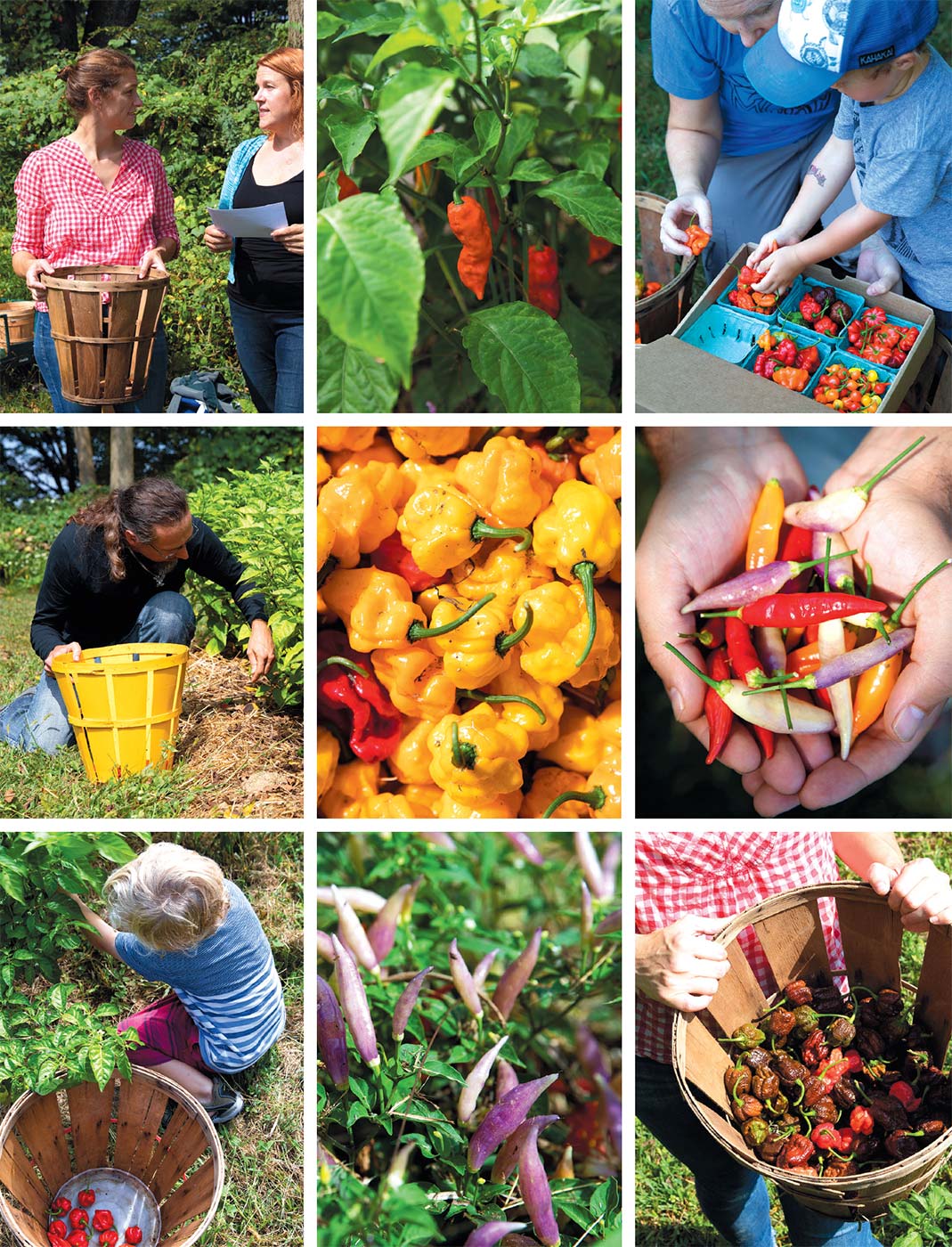
Top row, left to right: the author and Jasko picking peppers, ghost peppers growing, volunteers sort peppers. Middle row, left to right: a volunteer picks peppers, Papa New Dreadie peppers, a volunteer holds a variety of peppers. Bottom row: volunteer picking peppers, Aji Fantasy peppers, basket of Caribbean Reds
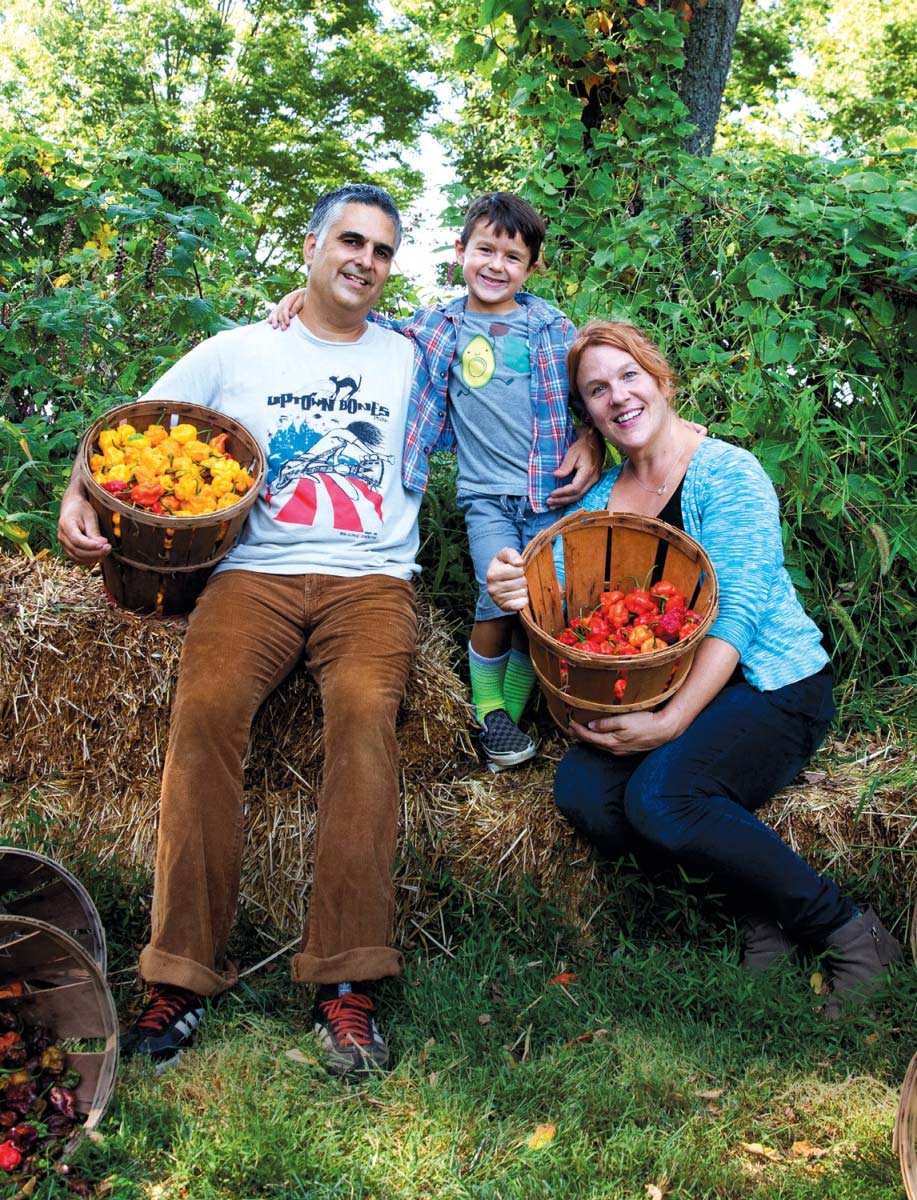
Jasko family portrait.

HOT, HOTTER, HOTTEST
Hot sauce freaks are always looking for the biggest burn. For a while, ghost peppers were considered an impressive achievement, but once fast food chain Wendy’s put them on the menu, pepperheads moved on to the next hot thing.
This year, it’s Carolina reapers (Jasko has them at her farm). Until recently, these lived at the upper limit of the Scoville scale, an index for measuring the spiciness of peppers. But recently, someone grew an even hotter pepper, what’s being called “Pepper X.” Odds are, Jasko will grow it soon.
And it’s great for more than just business. “I really love involving the local community,” Jasko says. “I want people to have a good time. We have the most crazy, fun conversations while picking peppers. It brings people together.”
Many of today’s pickers are regulars who return to pick year after year. Mike, 49, a tall, bearded vegan with glasses, has been picking from the start after meeting Jasko at a local hot sauce festival. He’s a pepper-head who will pop scorpion peppers in his mouth and chew them like candy. There’s a woman who isn’t much of a pepper fan, but brings her three kids to the field to pick because she likes the idea of teaching them a strong work ethic. Troy, 27, an anthropology major, tells me about the role peppers played in American colonization. There’s a woman with her toddler in tow, and a few more moms whose kids are schoolmates of Jasko’s 6-year-old son. He’s picked his share of peppers, too: “We have a video of him at 16 months old snapping a pepper off the vine,” she says.
Everything Jasko grows is pesticide-free. “Nothing is ever sprayed,” she says. And all her farming practices are undertaken with the goal of creating a healthier environment for the pepper plants. The nearby Rodale Institute helps her choose cover crops to plant between rows that reintroduce nutrients into the soil, and provides natural mulch. “I would never want to run a business, however successful, that was bad for the planet or the community,” she says.
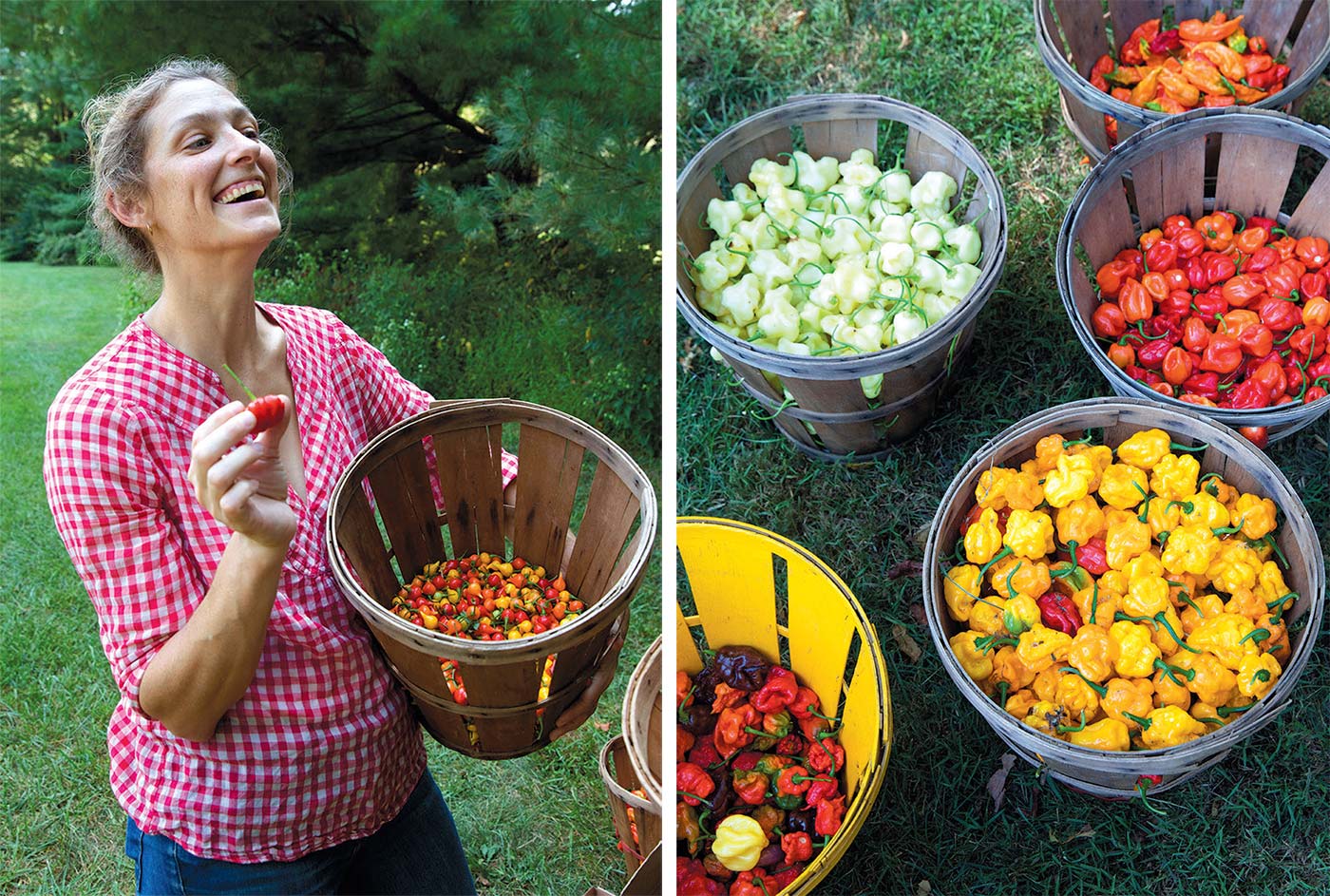 Left to right: The author picking peppers, baskets of peppers sorted for the Homesweet Homegrown CSA.
Left to right: The author picking peppers, baskets of peppers sorted for the Homesweet Homegrown CSA.
That philosophy seems to have served her well. She recently gained a national distributor (Giant Foods) for her hot sauces, which now number five, including Aramingo, the one that started it all (named for the avenue in Philadelphia near where she once lived—because, she says, “It sounded tropical.”). Her peppers have graced the menus of Gramercy Tavern and been sold at the Union Square Green Market in NYC, and the CSA sells out early every year. The farm-to-table café and catering company, Hive, which she started with her husband Paul David on Kutztown’s Sacony Alley in 2017, is doing a brisk business, and people fly in from across the country to take her hot sauce making class there.
It’s a marked change from her early days using a hair dryer to shrink-wrap the labels on bottles of hot sauce while watching Shark Tank, but in some ways, the process hasn’t changed at all. She still makes the sauces herself, in Hive’s commercial kitchen, and designs the labels for new products like this year’s XXXXX scorpion flavor. “it’s still very small batch,” she says. Every pepper she sells is grown within a mile and a half from Jasko’s home.
After the harvest, which ends in November—she’s used to packing peppers through Thanksgiving—the cycle starts again. Seedlings are started, fields are prepped and a new crop starts to grow. It won’t be long before it’s pepper season again.
HOMESWEET HOMEGROWN
HomesweetHomegrown.com
SPICE UP YOUR LIFE
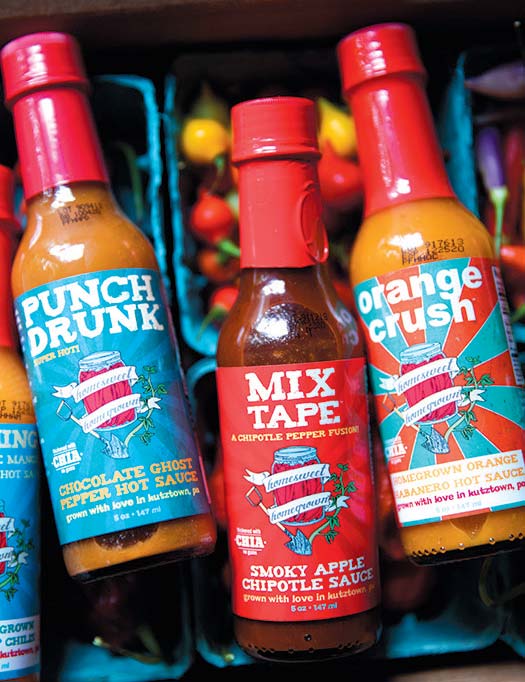 Jasko’s suggestions for enjoying her fresh peppers and hot sauces:
Jasko’s suggestions for enjoying her fresh peppers and hot sauces:
- Aji limon and Brazillian starfish peppers
Chop them fine and sprinkle them on anything—eggs, soup, salad- Punch Drunk Hot Sauce
Use it in a Bloody Mary- Aramingo or Mix Tape Hot Sauce
These milder sauces work well as marinades- Orange Crush Hot Sauce
A great wing sauce


